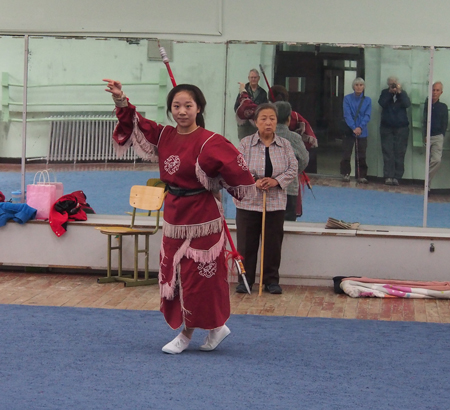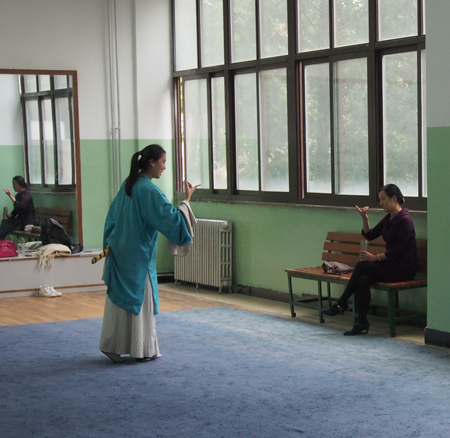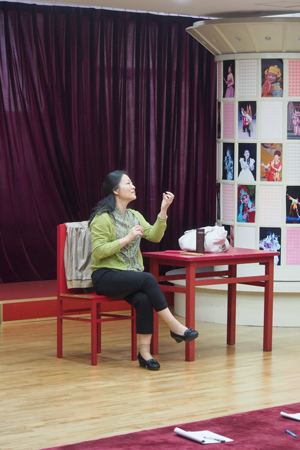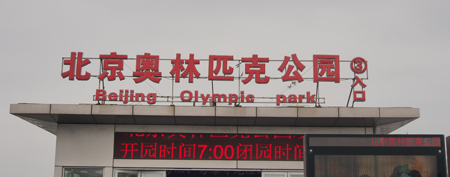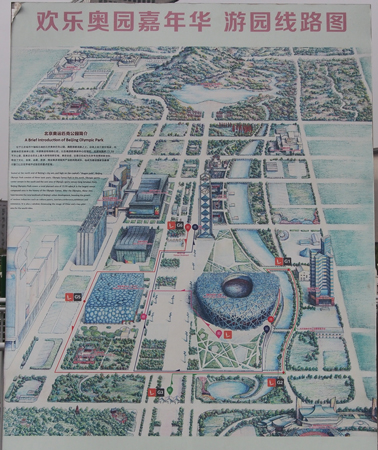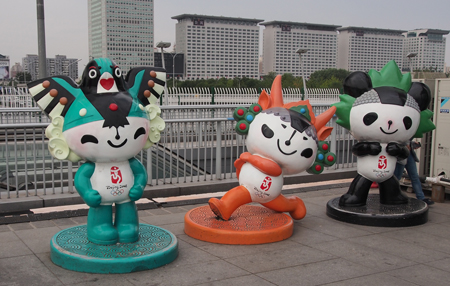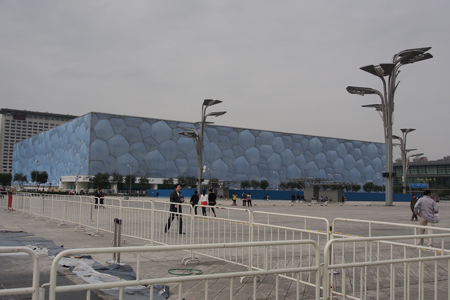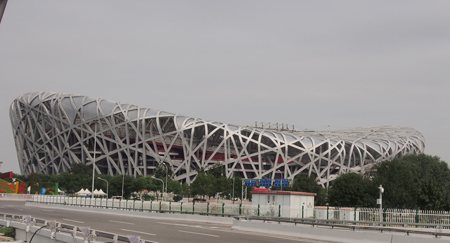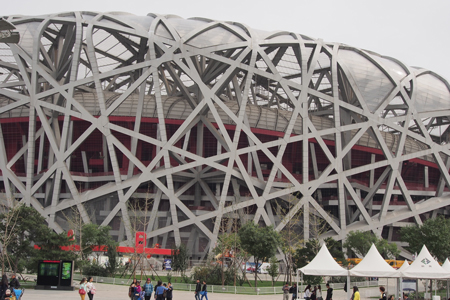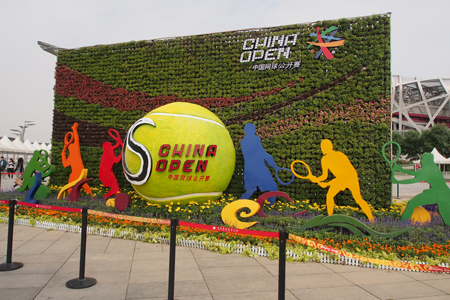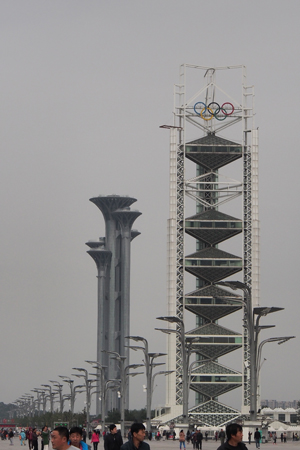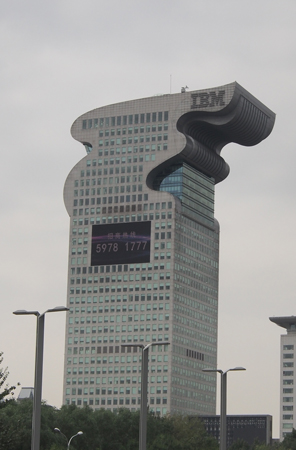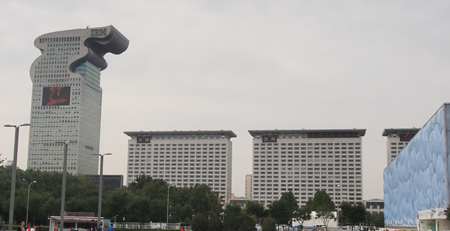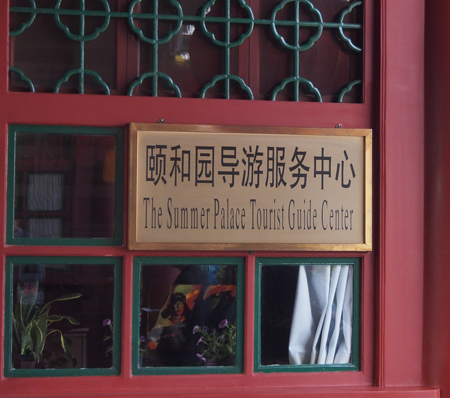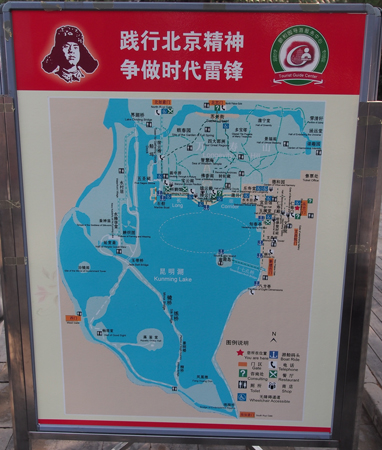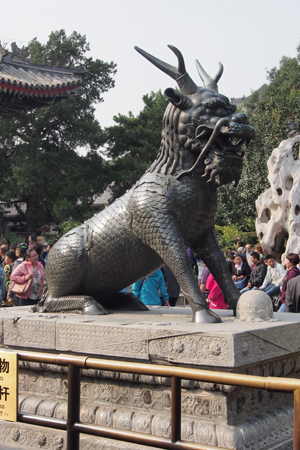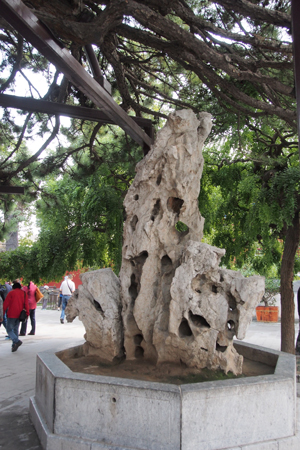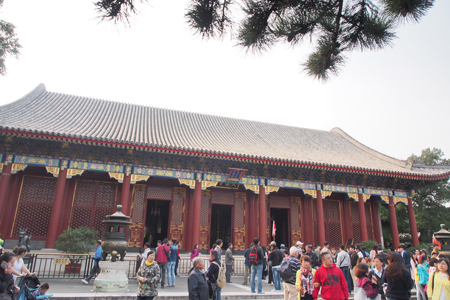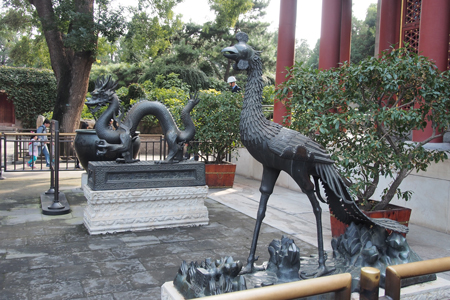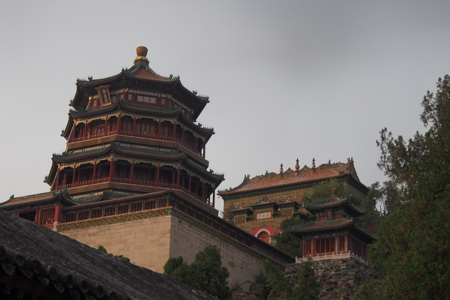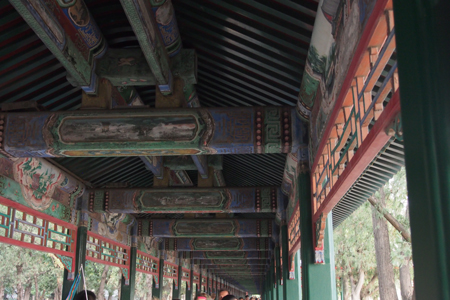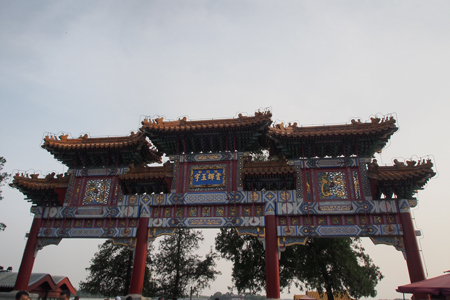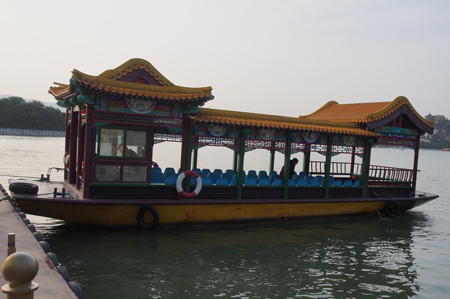Tues., 9/30/14 – Beijing
This morning we visited the Peking Opera School. It was opened in 1952 by the government to try to preserve the dying cultural tradition. Today there are 1200 students and 400 teachers. Students audition at the age of 10 to enter the school and graduate at age 20. They start the day with an hour of exercises, then spend three hours on academics, and three hours on opera topics. On the weekends they can go home but weekdays they must live in the boarding school. Only 30% of the graduates are good enough to audition for one of the 100 Peking Opera groups in China. Others may find jobs in staging or with other performing groups or become teachers of the younger students. We watched several classes of acrobatics, dance, and singing by teenage students. Chinese opera is VERY different from Western opera.
Peking Opera School
Peking Opera School
Peking Opera School - Voice teacher
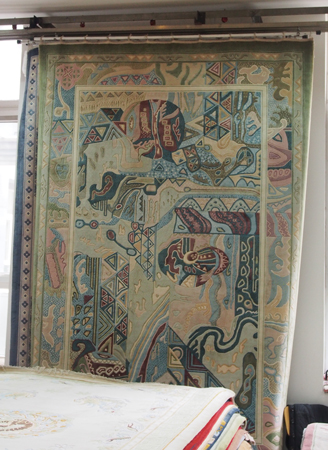
We next visited a government run silk rug and embroidery demonstration. The factory was moved from this site to outside the city of Beijing in 1993 to reduce pollution in the city. At this showroom one lady was knotting a demo rug and there was a small display of dyed silk. The rest of the space was used as a showroom for the rugs and tapestries. The price on a 1 by 2 foot carpet with bamboo and pandas was $1650.
We squeezed in a stop at the Beijing Olympic venue where we walked along the axis into the area with the Bird’s Nest stadium and the Bubble Swimming cube. From here we also looked at the Dragon Building, IBM’s building complex with a tall structure followed in a line by lower buildings representing the head and tail of a dragon.
Mascots
Swimming Cube
Bird’s Nest stadium
Bird’s Nest stadium
Floral ad for upcoming China Open Tennis tournament
Observation towers
Dragon building - "head"
Dragon building - "head" and two of the "tail" pieces
We spent the afternoon at the Summer Palace. Three-quarters of the royal gardens are taken up by the Kunming Lake. The dirt dug from the lake formed a hill (Longevity Hill) on which the emperor’s living quarters were built in the mid-1700’s. In 1888 the Dowager Empress Cixi (pronounced sort of like she-she) aka the Dragon Lady, spent all of the money designated for the Chinese navy to refurbish the palace and gardens. In addition to the living quarters, there is a section that contains the political halls (the Hall of Benevolence and Longevity) where the emperor sat on a throne and dealt with the issues of the country. At the entrance to the Palace and gardens was a bonze statue of Kylin (or Qilin), a mythical creature part lion, ox, fish, and deer. There are also two bronze phoenixes and dragons and a large incense burner. In 1750 a Buddhist Incense Tower was built high up on the hill. The Buddhas inside were taken by the Japanese in the first Sino-Japanese War and melted down to make cannons.
We walked the garden, the political area, the living quarters, and along the long covered walkway called the Long Corridor. The timbers inside the walkway are painted with scenes of the Chinese countryside. We looked at the Marble Boat. The hull is stone but the two stories are wood painted like marble.
We took a boat ride across Kunming Lake to the 17 Arch Bridge. It was cold today, but the sites we visited were all interesting.
Very large place
Floral bird
Kylin (or Qilin) - mythical creature part lion, ox, fish, and deer
Rock representing the mountains
Administrative building
Bronze phoenix and dragon
Detail on the Hall of Benevolence and Longevity
Tower of Buddhist Incense across Kunming Lake
Tower of Buddhist Incense
Long Corridor with intricately painted timbers
A gate
Marble boat
Marble boat
Our lake boat
Seventeen-Arch Bridge
On the bus ride to dinner, Joan told us what she lived through in 1989 and how the central government squashed all news reports of what really happened at Tiananmen Square. Even today the TV available in citizens’ homes only gets state controlled stations and cannot get BBC or CNN or HBO. Only Chinese movies and shows and censored news are aired. In the hotels, the management can connect a special cable for the English channels if the guests are foreigners. Local TV stations do not mention the protests taking place right now in Hong Kong. Only BBC and CNN have coverage but as soon as it comes on, the screen goes black.
It is interesting that we are traveling in this Communist country and do not realize the restrictions the Chinese have to live with. It seems that the people, at least those in the big cities, are happy with the way things are run as long as the economy keeps improving. The middle class can afford nicer apartments than even 20 years ago and most seem to have nice new cars.
We ate a dinner of dim sum dumplings and a few hot dishes at a local restaurant. The dim sum all tasted the same although it was supposed to have different fillings. After dinner we attended an included Beijing Opera performance. Instead of a four-hour classic opera, we watched a one-hour performance of three short stories. We read the sub-titles (in Mandarin Chinese and English) and sort of followed the stories. It was actually very interesting. Only one story had the unique falsetto “singing” and one had exciting stick fighting - too dark for pictures. It was a nice follow-up to our visit this morning to the opera school.
| Return to Top | Return to Itinerary | Return to Trips page to view other trips | Return to Dreamcatcher Home Page |

